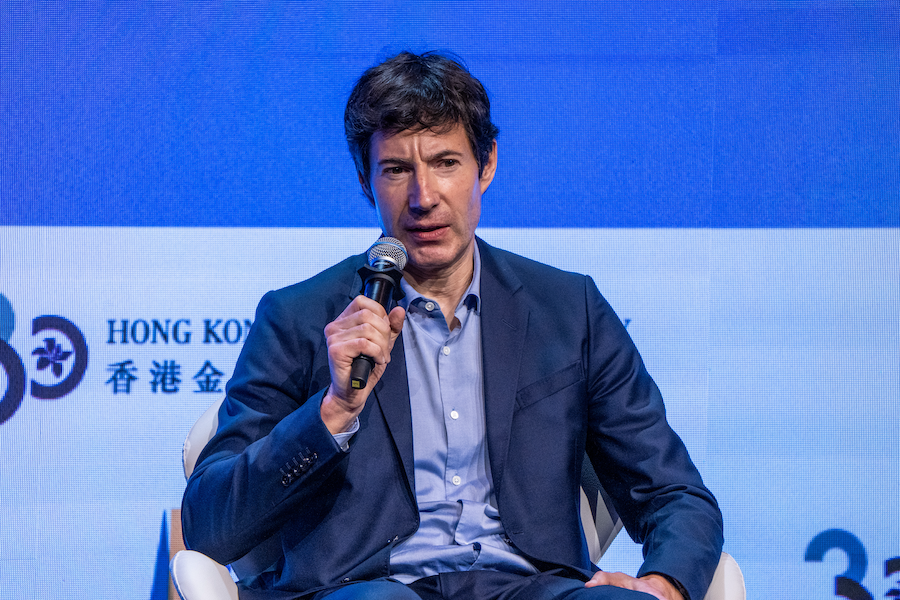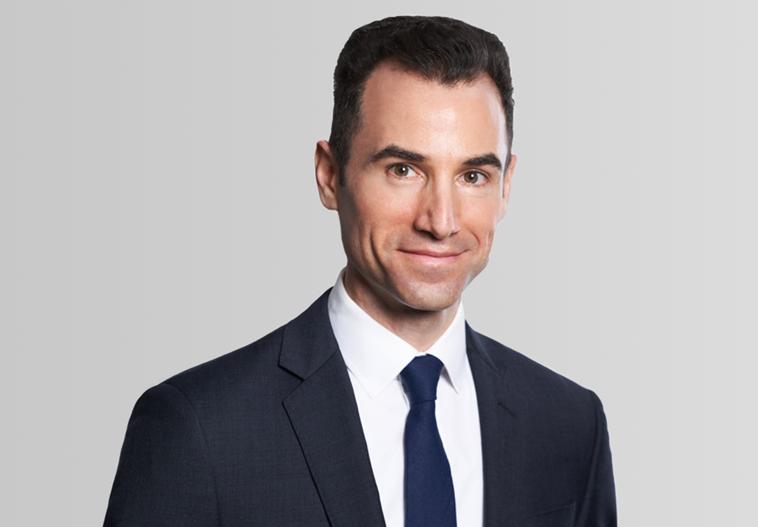Chris Gradel, co-founder and CEO of Asia Pacific investment firm PAG, talks to Brunswick’s Daniel Del Re about the growth of the firm and the outlook for the region.
For Chris Gradel, studying engineering management at Oxford was the first step toward fulfilling an ambition that seems quaint in retrospect: running a factory. Growing up in Northern Ireland during the Troubles, he sought to follow in the footsteps of his father who ran a textile manufacturing shop.
Not quite a year out of university, Gradel was on his way to getting his big chance. An Oxford professor had introduced him to the American business scion Robert Pritzker who appointed Gradel to work in a coal mining equipment manufacturing facility on the Virginia-West Virginia border. It proved to be a lesson in humility.
“His philosophy was ‘Get all arrogance kicked out with you, and understand things from the workers’ perspective,’” says Gradel of Pritzker. “It was a great learning experience.”
The lesson seems to have stuck. Several decades on and a world away from Oxford and the Virginias, Gradel is the disarmingly genial chief executive of a $56 billion alternative investment empire, PAG. The business is a product of his own risk-taking and a willingness to recognize his individual limits and share responsibility.
These attributes allowed Gradel to build a one-man, bootstrapped hedge fund shop he launched in 2002 into a pan-Asian partnership managing institutional capital across a range of investment strategies. To grow the firm in new directions, he brought on partners with different investing skillsets and gave them plenty of room to run. He even relinquished the CEO role when he thought that would best serve the business.
“I’ve always been a great believer that different asset classes require different types of mindsets,” he said as we sat in a conference room in PAG’s Hong Kong office, one of 13 the firm has across the region. “Part of the success of the firm is making sure we identify people with those skillsets and the right mentality for the different asset classes that we want to grow.”
Today, PAG’s investments span the major economies of Asia-Pacific, including Australia, China and Japan. The firm runs portfolios of public equities, private equity and real estate. It was early to the private credit craze, building on Gradel’s experience investing in non-performing loans in China as the country began liberalizing its financial markets in the early aughts.
“[The global financial crisis] was the most stressful period of my life, but it created the opportunity to change the business dramatically.”
Gradel has always been a man on the move. He first came to Asia in the late 1990s managing a mining equipment company for Pritzker. He caught the value investing bug after carving out a business to acquire from a Chinese state-owned enterprise. “We bought it at a discount to the value of the land and buildings. So even if the business didn’t work out, we knew we shouldn’t lose money.” Similar deals followed. But Gradel was restless. “I quickly realized that my dream of running a factory was actually not what I wanted to do for the rest of my life.”
He left that job for a stint at McKinsey in Australia, soaking up all he could on management and strategy. “I got exposure to a lot of different businesses. I got more organized. I learned how to put a presentation together. But I didn’t really see that as a career for myself.”
He transferred back to Hong Kong and left McKinsey to take an internship with the hedge fund Millennium where he learned arbitrage investing.
In a short time, he had honed his investing approach, garnered seed capital—including from Millennium—and set up his own trading shop. “The combination of my experience with Pritzker making ‘counter-cyclical value’ acquisitions plus the arbitrage experience, which taught me to look for mispricings in the market, became my underlying investment philosophy.”
He started out targeting listed closed-end funds investing in Asia that were trading at discounts to their net asset value. He traded troubled loans in China as the country’s banks were cleaning up their bad debts. He found opportunities to arbitrage the valuation differences between the tradable and non-tradable shares of listed Chinese companies. He even got involved in some IPOs.
After building up a track record, Gradel began to diversify. One of the most pivotal moments was bringing on the former Wharton economics professor and co-managing partner of TPG Asia, Weijian Shan, to start a private equity business. Gradel gave him the CEO role. That began the modern era of PAG and set the stage for what the firm has become.
Today, few investment shops are as much of the financial establishment in Asia-Pacific as PAG. Gradel is back in the driver’s seat as CEO, alongside Shan (who has taken on the role of Executive Chairman) and PAG President Jon-Paul Toppino. He’s also made his mark on Hong Kong’s cultural landscape. A lover of live music, he and a few friends founded what has become the city’s premier outdoor music festival, Clockenflap, which drew almost 90,000 attendees last year.
Below are excerpts from our interview.
What investments stood out and put PAG on the map?
There weren’t many landmark transactions in the early days. We had a lot of smaller transactions that worked out and added up. We annualized returns of about 40% for the first years.
One deal that got a lot of attention was in 2006. We did the first ever leveraged buyout of a mainland Chinese company. It was a company called Goodbaby that made baby products.
What were the pivotal moments in the growth of PAG?
The pivotal moments began in 2008. Our capital base in those years was not stable. Despite making money during the crisis, we had huge redemptions in 2008 and 2009. I felt we needed to institutionalize the client base. My idea was to bring in somebody with strong institutional relationships as well as a strong investment track record. That’s when I met Weijian Shan.
He was thinking of leaving TPG to set up his own business and I said, “Why don’t we join forces? You can become a large partner in the business. You can be chairman and CEO. We can build this together.” He agreed and not only built a distinctive private equity business but also opened the door to sovereign wealth funds and large pensions to accelerate the institutionalization of the investor base.
In 2009 we set up an office in Tokyo and we started working with a local real estate investment manager run by Jon-Paul Toppino. They were listed and their share price, like all property stocks at the time, was really down. JP and I got on extremely well and we ended up taking his business private and merging.
At that point, we had a new private equity business run by one of the best guys in the business, and we had one of the best real estate investing platforms. Around that time, we also launched our dedicated private debt funds. So we suddenly went from being a hedge fund to becoming a truly diversified institutional business.
All of that came out of the global financial crisis. It was the most stressful period of my life, but it created the opportunity to change the business dramatically.
“One of our unique advantages is that we do more strategies across more markets in the region than anyone else. We’re diversified by strategy but also by geography.”
What has been the evolution of your role at PAG and what have you learned from those experiences?
When we started, it was me and a Bloomberg terminal, so I did everything. Then as the firm grew, I moved to more of a CIO role with investment teams doing the majority of the investing.
Another shift was going from being a solo act to being part of a partnership. That shift was a little harder—going from having full control to having partners and a central investment committee that approves investment decision. It was an adjustment. But when you’ve got trusted partners, it becomes more fun.
And at the end of the day, we’re stewards of other people’s money. I’m not sure one person should have carte blanche to run things. There needs to be checks and balances. A partnership is a better, safer structure for the investor.
You were early to private credit which has become all the rage. How did you spot that opportunity?
We started on the distressed side looking at non-performing loans, which led us to spot an opportunity in private credit in China.
China was using the supply of credit as one of its macroeconomic tools. We noticed that when they tightened credit, then the marginal lending rate went up and created a gap in the market on the lending side.
Then the financial crisis caused global bank regulation to change and forced banks out of certain traditional lending businesses and opened up a gap for non-bank lenders. Because we were already aware that regulatory interference creates these gaps, we’d been looking at the market and were quick to spot the opportunity in private credit.
How are you staying competitive in this growing asset class?
There’s been quite a bit of consolidation in the industry. The large guys keep getting larger and larger and they want to go into more areas.
I think one of our unique advantages is that we do more strategies across more markets in the region than anyone else. We’re diversified by strategy but also by geography. We’re shifting from selling funds in individual silos to selling the best of the firm. We’ve created a new data science team looking at leveraging knowledge from all parts of the business to help make better investment decisions and we now create more tailored products for our clients who want specific exposures and solutions.
What gives you optimism about this region at a time of uncertainty, regionally and globally?
It is a huge part of the world economy, you know. Three of the top five economies in the world are here. The bulk of global GDP growth is coming from here. And even though China has some challenges today, there are still opportunities there.
And again, we’re a regional firm. Because opportunities come and go, we need to be flexible. Right now, we are doing a lot in Japan across all parts of the business: real estate, public equities and private equity. We’re starting to see some credit opportunities develop there as well. We’re very active in Australia across all parts of the business. And our India business has grown significantly over the past six years.
Are there any philanthropic interests that you have?
I am quite active in education. PAG has set up a scholarship for Chinese students to study at Oxford, and we’re going to expand that to other countries in the region. I think educational exchange is hugely important.
Also, I set up the Gradel Institute of Charity at Oxford, which studies all aspects of charity and philanthropy and what makes certain things more effective than others. It’s launching Ph.D. and master’s programs, but also practitioner programs [to upskill] people working in charities and nonprofits. We want it to have a ground level impact as well.
[In the lead photo, Gradel is speaking at the Global Financial Leaders Investment Summit in Hong Kong in October 2023.]




